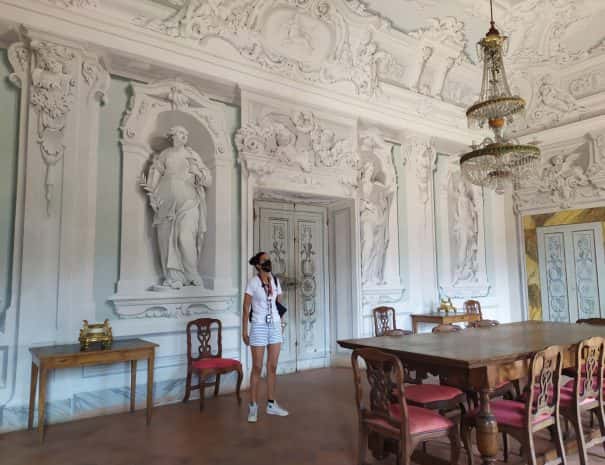If I were tired of the city, a few kilometers away is the sea, to remind us of the glorious past of Pisa Repubblica Marinara. The nearest beach is in Marina di Pisa, where the Arno flows, a stony beach in reality, so if you love the sand I suggest you continue a little further south, towards Tirrenia and Calambrone.
Before consulting with your doctor or pharmacist first, do not start, stop, or adjust the dose of any medication. Fluvoxamine (a strong CYP1A2 inhibitor) can increase blood concentrations of asenapine, while asenapine can increase blood concentrations of paroxetine (a strong inhibitor of CYP2D6 and also a CYP2D6 substrate). Misoprostol is combined in a single pill with the NSAID diclofenac (Arthrotec®) lire. The related anticonvulsants, carbamazepine and oxcarbazepine are contraindicated in combination with rilpivirine.
For those who love trekking there is also a whole series of routes along the Pisani Mountains. Routes all well signposted, which will make you discover breathtaking landscapes and ancient ruins, such as the remains of the majestic Rocca della Verruca.
Let’s not forget the Park of San Rossore, a vast protected natural area where you can take beautiful walks and relax in the shade of some pine trees, but watch out for wild boars and fallow deer.
The Certosa of Calci
A few kilometers from Pisa is the Certosa Monumentale di Calci, a wonderful Carthusian monastery founded in 1366 and set at the foot of the Monti Pisani. It is located in the beautiful Val Graziosa. In a wing of this beautiful architectural complex is located the Natural History Museum of the University of Pisa. The museum houses collections ranging from the admirableaaa remains of gigantic cetaceans.
But the most spectacular part is the Carthusian monument, with its eighteenth-century renovations that take you back in time. Enjoy the silence and solitude in the middle of the mountains like the old fathers did.
With our tour of the Certosa di Calci, you will be able to discover the interior of this Pisan jewel.

The surroundings of Pisa: Volterra
olterra is a village built on a hill between the valleys of Era and Cecina. With its double walls, the Etruscan and the nineteenth-century, it is a city with a medieval aspect, where it is still possible to taste the atmosphere of an ancient village.
Volterra (in Etruscan Veláthri), was one of the main city-states of ancient Etruria and during the Middle Ages was the seat of an important episcopal lordship. The village has been known for centuries for the processing of alabaster whose artifacts constitute today one of the most important products of Italian craftsmanship.
She is known by younger people because many places in this town inspired the Twilight saga.
In reality it is a small village located on top of a hill, once you reach Volterra you absolutely must not leave out anything, you have to see everything. The historic center with the beautiful Palazzo dei Priori, the Duomo and the Baptistery, the ancient Roman baths then transformed into a theater, the Pinacoteca, the famous Guarnacci museum where many Etruscan urns are preserved and not only.
San Miniato
Small Pisan town, now famous for its white truffle, is located halfway between Florence and Pisa.
In the past it was the site of numerous clashes between different factions that for centuries tried to conquer this small strategic municipality, made even more strategic by the fact that the Via Francigena also passed from there.
It is worth stopping even if only passing through to visit its historic center full of avenues and ancient buildings.
On the top of the hill on which the village sits stands the Rocca di Federico II, completion of the defensive complex of the castle: here the Emperor between 1217 and 1221, had the tower of San Miniato built, which became the symbol of the village.
The Cathedral dates back to 1200, you will be struck by the singular decoration of the facade, composed of a series of ceramic discs that reproduce the arrangement of the stars in the constellations of Orsa Maggiore and Minor.
As mentioned, the town of San Miniato is rich in churches and palaces that are worth visiting, among these it is worth mentioning at least the Church of the Most Holy Crucifix, the one called the Loretino, the Church of the Santissima Annunziata, that of San Iacopo and Santa Lucia, the Convent of San Domenico and finally the Bishop’s Palace.
Vicopisano
Vicopisano is a beautiful medieval village that tells its exciting thousand-year history every day. Located in the province of Pisa, it has a strategic location: between the course of the Arno river and Monte Pisano.
During the Middle Ages, all the settlements of the Lungomonte, together with Vicopisano, assumed a particular importance for the political and economic life of Pisa: they were points of military defense of the territory and centers of land ownership of the Pisan aristocracy.
After the strategic-military interest of the area, after the Florentine conquest, the investment by the most important houses that chose these places, immersed in the fertile countryside, to build their sumptuous residential villas did not cease.
To stand out in the historic center of the town is undoubtedly the Rocca di Vicopisano complex called Rocca del Brunelleschi: a beautiful example of medieval and Renaissance military architecture, designed by Filippo Brunelleschi in 1438 to make the city impregnable.







